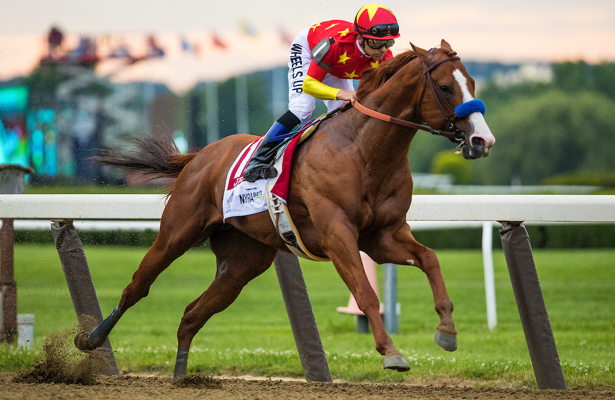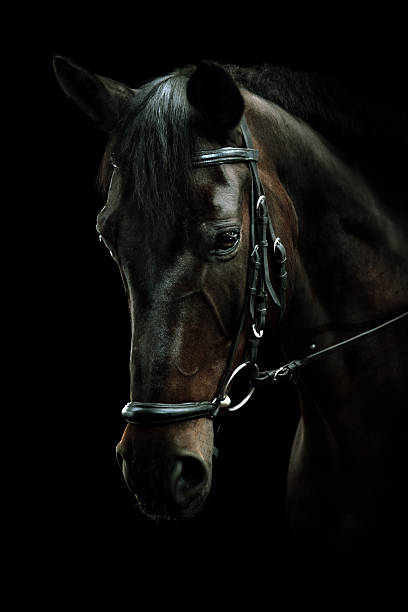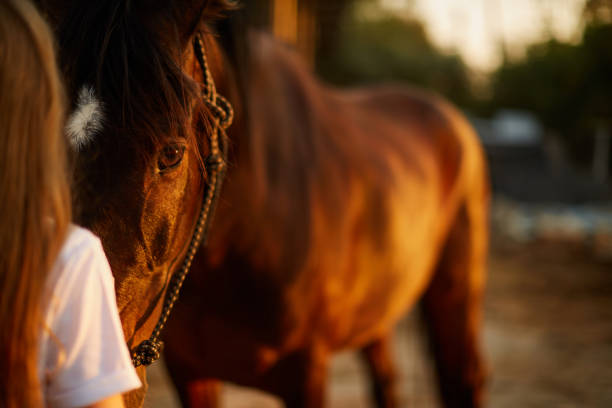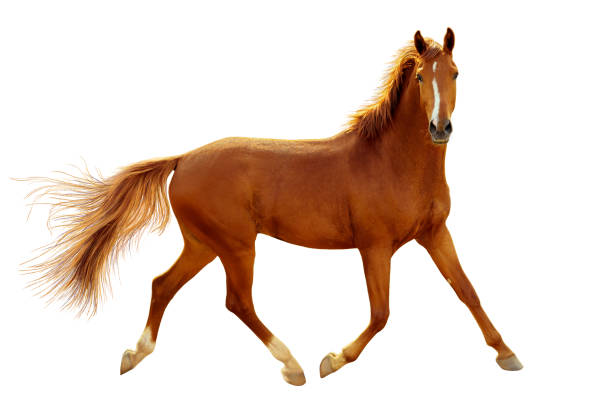
Man o’ War is perhaps the most famous racehorse that has ever lived. During his career, he won 20 of his 21 races, and on that one race he lost, he came in second to a horse named “Upset.” Man o’ War set three track records, two American records, and three world records. He sometimes carried as much as 138 pounds, 30 pounds more than some of his competitors, yet he still managed to outrun them, usually by lengths. Because of his famed career, Man o’ War made the United States the racing center of the world. His sire was the top-rated racehorse, Fair Play. Man o’ War’s dam was Mahuba, the daughter of English Triple Crown winner Rock Sand. Mahuba had won a race but was retired early due to her high-strung temperament.
After World War I broke out in Europe, Belmont joined the service and became Major Belmont. Because of the war, track attendance and purses were at record lows. Belmont sent most of his yearlings to Saratoga for auction. The major had intended to keep the Fair Play-Mahuba offspring, who Mrs. Belmont referred to as “my Man o’ War,” but at the last minute the leggy colt was loaded onto the trailer with the rest of the yearlings. The colt was not the high seller that day. That distinction went to Fair Gin, who brought $14,000. The Belmont baby did bring a good price, however: $5,000. The average sale that day brought only $1,038. The big colt went to his new home, Glen Riddle Farm, owned by racing newcomer Samuel D. Riddle. Riddle called his new horse “Man o’ War,” but his trainers called him “Big Red.”
Man o’ War’s trainers had a tough time with him. He was high-strung like his dam, and from his father he inherited a fiery disposition. He was tall and somewhat thin, and some knowledgeable horsemen at the time were not impressed by his conformation. Riddle thought the colt might make a good hunter-jumper. Over the next months, however, Man o’ War grew into a beautiful animal, with heavy muscling, a proud head carriage, and long, clean legs. His first race was a maiden race at Belmont Park in 1919. He won easily, by six lengths. Just a few days later, he won the Keene Memorial by three lengths. His wins continued, and more weight was added to his back. He still went on to win prestigious races like the Saratoga.
Later in 1919, Man o’ War beat Upset by two lengths in the United States Hotel Stakes, but when the pair competed less than two weeks later in the Sanford Memorial Stakes, the big horse suffered his first and only defeat. In this legendary race, Man o’ War got caught behind the leaders. He had to go wide in order to pass Upset, and when he did, he ran out of running room. Upset won by half a length, but Man o’ War got his revenge in their next meet. He beat Upset by a full length in the Grand Union Hotel Stakes.
As a three-year-old, Man o’ War was 16.2 hands tall and weighed 1,125 pounds. His girth was very large, at 72 inches, and he had a voracious appetite. He consumed twelve quarts of oats a day, three quarts more than the average racehorse. His stride had been measured at a mind-boggling 28 feet. He was ready to meet Upset yet again in the Preakness Stakes. Upset was just coming of his Kentucky Derby win, but Man o’ War beat him by one and one-half lengths. Later that year, Man o’ War won the Jockey Club Stakes by an amazing fifteen lengths, and he won the Lawrence Realization by an unbelievable 100 lengths.
The nation was all abuzz about the great horse, and a match race with the older Sir Barton was offered. Sir Barton had won the Kentucky Derby, the Belmont, and the Preakness. It was agreed that the race would be ten furlongs at Kenilworth Park. Man o’ War dominated the entire race, winning by seven lengths. This race was Man o’ War’s last. Because of his great success, handicappers were adding more and more weight for the horse to carry in order to give others a chance. Riddle refused to endanger his prize stallion by running with so much weight, so he retired the horse. Man o’ War’s earnings were $249,465, a new record.
Man o’ War retired with his mares to Hinata Farm, located just north of Lexington, Kentucky. Two years later, he was moved to Faraway Farm, where he became a huge tourist attraction. He sired Triple Crown winner War Admiral and Hard Tack, the sire of Seabiscuit. Big Red died in 1947 from a heart condition, at the age of thirty. He was mourned by the nation; over 2,000 people attended his funeral. Riddle had the horse embalmed and buried in a coffin lined with his racing silks. He was interred at Faraway, with a life-size bronze statue placed on his grave. In the 1970s, his remains and the statue were moved to the Kentucky Horse Park. Many visitors still pay their respects to, as his groom, Will Harbut, referred to him, “de mostest hoss that ever was.”






